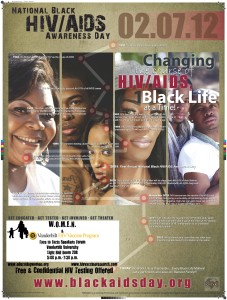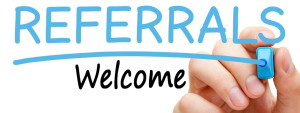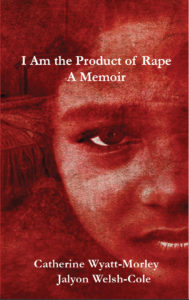Nacional Latino Para La Concientizacion Del SIDA
Día Nacional Latino para la Concientización Del SIDA
El 15 de Octubre culmina la celebración del Mes de la Herencia Hispana y marca el día designado como el Día Nacional Latino para la Concientización sobre el SIDA (NLAAD). NLAAD es una campaña nacional de mercadeo social que unió la comunidad Hispana sobre el VIH, la promoción de la prueba del VIH, la prevención y educación sobre diferentes temas de salud como hepatitis viral, enfermedades de transmisión sexual y tuberculosis. ñNLADD
Para más información:
Llama 615-256-3882
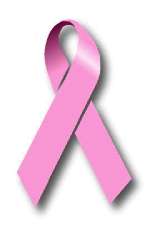
Breast Cancer Awareness Month
October is Breast Cancer Awareness Month,Women On Maintaining Education and Nutrition would like to stress the importance of taking action when it comes to your breast health. Breast cancer is one of the most common cancers among women in the United States and is the most frequently diagnosed cancer among nearly every racial and ethnic group. Statistics show that White women have a higher rate of developing breast cancer; however African-American women under the age of 40 have a higher incidence of breast cancer and are more than likely to be diagnosed with larger tumors. Also, African-American women are more likely to die from breast cancer and the five year survival rate is 79 percent lower than that of any other racial or ethnic group in the United States.
There are many reasons for the differences in incidence and rates of survival, which include:
Presence of risk factors
Barriers to health care access
Later stage diagnoses
Biological and genetic differences in tumors
Because of the higher incidence and lower rates of survival, early detection and breast self-awareness are critical to breast health. It is very important to be pro-active about your breast health; there are a few things you can do which include:
1. Know your risk
-Talk to your family an know your health history
-Talk to your health care provider about your personal risk
2. Get Screened
3. Know what is normal for you
– Perform a self breast exam every month and see your health care provider about any changes such as lumps or change in size or shape of the breast.
4. Make healthy lifestyle choices
– Maintain a healthy diet
– Exercise
– Limit alcohol intake
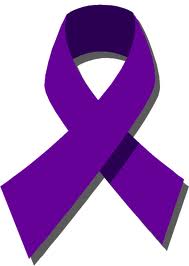
Domestic Violence Month
October is also Domestic Violence Awareness month. Domestic violence has no regard for socio-economic status, race, ethnicity, religion, employment status, physical ableness, age, education, marital status, or sexual orientation.
In the United States, one of the most dangerous places for a woman is her home. Every 9 seconds in the US, a woman is assaulted or beaten, and every day more than three women are murdered by their husbands or boyfriends. Violence is often a cycle for both women and men. Some grew up in abusive homes and in turn think abuse is the norm. A lot of women do not leave their abuser because they are emotionally and economically dependent on the man as well as scared of the consequences of leaving. This cycle of violence is unhealthy and a very serious issue that will only continue unless both the abuser and the victim receive help and treatment.
If you or someone you know is experiencing domestic violence, please seek before it is too late. If you do not know where to find help, please contact W.O.M.E.N. at 615-256-3882 and we will get you the help you need. You can also review our “Resources” section for more information.
Poverty In The US
According to new census data, 1 in 15 Americans are now living in poverty and 15% (45.8 million) of the US population are now on food stamps. This is an 8% increase over the past year. By these numbers, the poorest include a single person earning less than $5,570 annually or a family of four living on $11,157. However, the official federal poverty threshold for a family of four is $22,113. This threshold was developed in the 1960s and determines eligilbity for government aid such as food stamps and Medicaid. A major issue with the federal poverty line is that it is the same across the board and does not reflect geographic locations. For example, despite differences in cost of living and incomes, the poverty level in New York is the same as in Mississippi.
However, the Census Bureau has offered a solution to this issue by announcing a second way to calculate the poverty line, the Supplemental Poverty Measure. This method is more detailed and more accurately reflects both expenses and benefits that affect low-income families. For example, geographic location, government assistance and expenses are all considered in the new calculation. The new calculation also increases the poverty threshold from $22,113 to $24,242 which added 3 million more to the number of poor individuals in the US.
Due to financial hardships and unemployment, the situation for many is expected to become grimmer and the number of those living in poverty is expected to increase.
The Red Ribbon Affair
World AIDS Day is Thursday, December 1. Please join us in honoring the millions who have passed on as a result of AIDS-related deaths.
The Fisk- MMC HBCU Wellness Project is hosting a commemorative event at Jubilee Hall, Appleton Room on the campus of Fisk University. The event starts at 6pm. The keynote speaker will be our very own, Catherine Wyatt-Morley.
For more information, please contact Kamil Smith:[email protected] or Elizabeth Stewart:[email protected]
W.O.M.E.N.’s H.O.U.S.E. Informational
This is your unique opportunity to participate in the forming of W.O.M.E.N’s next venture: W.O.M.E.N.ís H.O.U.S.E. (Home Of United Self Empowerment). This facility will provide a holistic approach to comprehensive services that integrate treatment and prevention in one location driven by a research environment.
We will hold an informational committee meeting:
When: Monday, January 9, 2012
Where:
Conference room at W.O.M.E.N.
417 Welshwood Dr., Ste 303
Nashville, TN 37211
Time: 12:00pm-1:00pm or 5:30pm-6:30pm
Capacity is limited, please R.S.V.P. to:
[email protected] or 615-256-3882.
Operation Panty Power – There Is POWER In Your Panties
Women On Maintaining Education and Nutrition would like to announce our newest campaign, Operation Panty Power (OPP).
Operation Panty Power is a campaign created by W.O.M.E.N. to empower women. The message of OPP is that “there is power in your panties”.
The purpose of OPP is the distribution of new unworn panties to women 18 years of age and older. Each panty distributed will be accompanied by an educational message that encourages protection and empowerment.
W.O.M.E.N. is in need of new unworn panties of all sizes, types and colors!
Please DONATE panties now!
Donations are being accepted at W.O.M.E.N.’s office located at 417 Welshwood Dr., Ste. 303 in Nashville, TN. Our office hours are Monday-Friday 8AM-5PM. However, with advance notice we can extend our hours.

Face To Facts: A National Black HIV/AIDS Awareness Day Event
W.O.M.E.N. and Vanderbilt HIV Vaccine Program will be hosting ‘Face to Facts:Speakers Forum’, a National Black HIV/AIDS Awareness Day event.
This spectacular event will feature music,food and first person stories from African-American individuals living with HIV/AIDS.
When: February 7, 2012 5PM-7:30PM
Where: Vanderbilt University,Light Hall Rm 208
Free and confidential HIV testing will also be available.
The Truth About Female Genital Mutilation
Female Genital Mutilation (FGM) is a cultural practice started 2000 years ago that involves cutting or removing female genital tissue. An estimated 100-140 million girls and women worldwide are currently living with the consequences of FGM. This procedure has no religious basis or medical benefits and oftentimes can lead to death. The causes of FGM include a mix of cultural and social factors within families and communities. An estimated 3 million girls undergo the procedure annually. Young girls undergo female circumcisions sometime between infancy and the age of 15.
The type and severity of the procedure used varies depending on the ethic group, country and socioeconomic status. In some countries only small cuts are made but in others the entire clitoris and labia is removed only leaving a small hole. Female circumcision is performed without the care of medically trained personnel and without anesthesia. The girl is held down by older women to prevent movement and is cut using a razor blade, scissors or a knife. In the more severe cases, any available sharp object such as a tin lid or broken glass is used. The girl will then have to be stitched up and her legs bound for up to 40 days. Victims of FGM often combat psychological issues as well as suffer from physical consequences.
In addition to psychological effects, the immediate physical complications include: severe pain, shock, hemorrhaging, and bacterial infection. The long term complications are more severe and include: chronic pelvic infections, sexual dysfunction, increased risk of childbirth complications, and infertility.
Many assume that FGM is only an issue in other parts of the world such as Africa and Asia. However, it is becoming a problem in the United States as well. The practice of FGM is so ingrained in some cultures that it defines members even after they move to other parts of the world. The Centers for Disease Control and Prevention (CDC) estimates that between 150,000-200,000 girls in the US are in danger of being taken overseas during their time off from school to undergo vacation cutting. Some families even pay to bring someone from their homeland to the U.S. to perform circumcisions.
FGM is seen as a human rights issue and is recognized on the international level. Although, banned in the U.S. since 1996, there is almost no legal protection against FGM and it has become a serious issue in most urban centers in the U.S.
Despite some legislation and society’s views on the issue, change must start on the cultural level to end this brutal and inhumane practice.
Cancer And HIV/AIDS A Tale Of Two Diseases
Thanks to better treatments, people with HIV/AIDS are living longer. Although, fewer people now die from AIDS, cancer is emerging as an important cause of death for the infected population. This can be attributed to the fact that these individuals often have more exposure to other viruses or agents that cause cancer, their immune systems are somewhat weakened and the risk of cancer increases with age. However, types of cancer that have traditionally been associated with AIDS progression are on the decline in the HIV/AIDS population while other types of cancer are on the rise. The most common non-AIDS-defining cancers in patients with HIV are anal, lung and liver cancers. As well as Hodgkin lymphoma. In 2001 through 2005, these four cancers made up nearly half of all non-AIDS-defining cancers.
In order to combat the increasing rates of cancer in individuals infected with HIV/AIDS, medical experts recommend prevention, screening, treatment and avoiding exposure to other risk factors.

